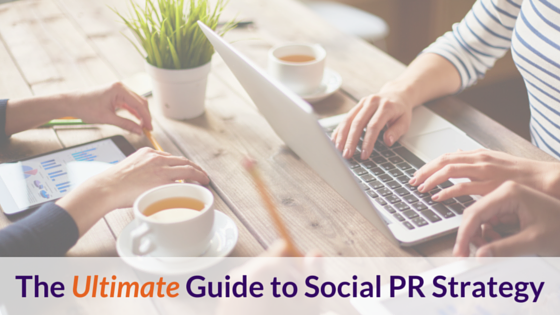
[Post updated May 19, 2017]
If you work in Social PR today (and there’s a strong chance you do, if you’re reading this post), you might be hard-pressed to remember the “medieval times” of the PR world.
You know… the “old” days, back when we didn’t have social media. No Twitter, no Facebook, no YouTube, no Blab, no Snapchat… none of it.
If we wanted to get information out, we had to depend on the news media, which meant we had to issue press releases.
And by issue, I mean print them out once they’d finally been approved…
… Run them down to the local copy shop – which had been duly alerted that a job was coming their way – to get them copied, Z-folded and stuffed…
… Run them back to the office to crank the franking machine on HUNDREDS of these little buggers, and then…
… Run down to the post office to drop them off.
And if it was getting close to the post office’s deadline… well, EVERYone who was free would be roped into helping out.
So often there were several of us, arms full of Z-folded, stuffed, franked envelopes, marching down to the good old P.O. to get the good old word out.
And that was just the first step in the process!
Well, times have certainly changed. And PR has changed along with it.
Today, social media doesn’t raise eyebrows the way it used to.
Brands know that these channels need to be a part of our communication spectrum.
So talking about a Social PR approach with clients doesn’t necessarily cause a whole lot of rending of one’s garments and tearing out of one’s hair.
They know it’s par for the course.
There’s just one problem
The thing is, there’s so-so Social PR, there’s this-is-so-NOT “Social” PR – which is most of what’s out there – and then there’s Superhero-level, stratospheric Social PR.
And for PR to really work in this day and age, it’s really only the last one that counts.
So I’ve put together a MASSIVE blog post that will help you understand exactly how to do that … and giving you a way to bring all this to life via a free training (see below)!
Getting Your Social PR Strategy Off the Ground
This detailed guide is ripped straight from my uber-successful online mini-training, “Lift Off! The Social PR Superhero’s Guide to the Galaxy,” which I built around my proprietary 7C Social PR Framework™.
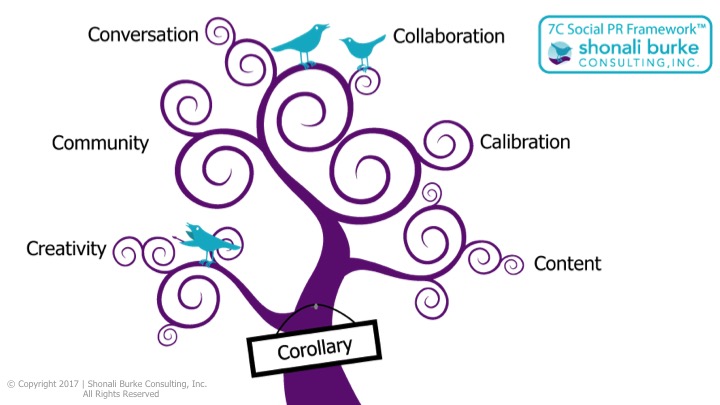
The Framework is such an integral part of smart Social PR, it forms the foundation of my Social PR Virtuoso® Master Course, which one of my students described as the “A to Z” of Social PR.
Speaking of which, I do need to get something off my chest first.
The Master Course obviously has much greater detail on how to build out the Framework than this post.
After all, it’s spread out over four module of instruction, 35 lessons, 10+ hours of training, there are 25+ swipe files, and cheat sheets, and mind maps, and process maps, and workflows …
But you need to have a solid grounding of the Framework in order to implement everything you learn about in the course.
So that’s why I’ve written this post, so that you can see exactly what goes into each successful C.
And, if you want to get up close and personal with my approach to Social PR and the 7C Social PR Framework, you should join The Social PR Posse, a free Facebook group I founded (and still manage), where we chat about all things Social PR.
I mean, it is completely free.
Ready to dive in?
Let’s go!
Element #1: Corollary
This is a great word, but what does it mean in the 7C context?
You’re probably familiar with Murphy’s Law. Actually, there are several variations on said Law. Here’s an interesting tidbit you may not have known: Capt. Murphy did not discover a single one of them.
The most well-known version of M. L. – and this I know you know – is: “If anything can go wrong, it will.”
Corollary in the Social PR Context
In the Social PR context, what that means is this: you could have the best tactical ideas in the world.
But if they’re not mapped out as part of an overall strategy – one that makes perfect sense based on, and follows logically from, your business objectives – then pretty soon your program is going to start crumbling worse than a House of Cards.
Smart Social PR strategy always always ALWAYS maps to business objectives.
That is why the very first “C” stands for “corollary” – something that naturally follows or results from another thing (Merriam-Webster definition).
So when you start to devise your Social PR programs, whether for your organization or your client, here are some questions you should be asking yourself (and/or your client/colleagues):
- what are you doing?
- why are you doing it?
- who are your stakeholders?
- have you configured your ideal customer profile?
- how is your business (even if it’s a non-profit, it needs to keep the lights on, right?) going to benefit as a result of your efforts?
Great Social PR asks and answers these questions. So while you might see terrific campaigns that look like they were a lot of fun to work on, if we can’t see how they actually tied back to business results they’re a waste of time.
Corollary: Example
A great example of deeply strategic Social PR? American Express.
The company was early to the idea of integrating social media into its overall strategy. In fact, one of its most successful campaigns, “Small Business Saturday,” has been running for the better part of a decade now.
But why did the company start this initiative, and why does it keep it going?
At its core, there are two things AMEX needs to have happen from a business point of view: a) more customers using its credit cards, and b) more merchants accepting its cards.
So if the company can create brand experiences for customers and merchants that speak to how unique and valuable its card membership is, it’s more than halfway there.
If you have ever used an American Express card, you’ll know that this is deeply rooted in the company’s ethos. It’s offered perks to its members as far back as I can remember, like concert experiences, and other unique offers.
AmEx recognized it could use social media to start creating unique experiences for customers and prospects in a similar way.
So it started partnering quite early with sites such as Foursquare, to offer deals to card members when they checked in and used their cards at certain locations.
It also knew it couldn’t simply do something “cool” and “fun” for a couple of months, and then disappear.
So, as the social media landscape – and the economic landscape of the country – changed, AmEx’s efforts kept pace. They broadened the scope of their efforts, they changed them up as social networks ebbed and flowed … but they didn’t give up.
As a result, #smallbizsaturday has become a movement that transcends AmEx, even though it wouldn’t have seen the light of day without the latter’s efforts.
Element #2: Creativity
I love this quote from William Plomer, the South African-born writer:
“Creativity is the power to connect the seemingly unconnected.”
Creativity in the Social PR Context
We’re a pretty creative bunch, so this doesn’t need a lot of explaining. I do want to point out one thing, though, and you’ll soon see why I led with Plomer’s quote.
Creativity, for Social PR pros, is not (just) about being able to use Photoshop.
Certainly, if you have those #madskillz, you should absolutely use them! (And I’m envious, Photoshop scares me a bit, though I’m quite at home in Canva.)
What creativity is really about is: being nimble, flexible, and versatile.
It is about identifying and unleashing what makes you YOU, in a way that connects with, and delights, your audiences.
Like it or not, we live in an age where personality rules. In fact, if you think about it, that’s what we’re constantly exhorting brands to show.
“Show some personality in your tweets!”
Etc. etc. etc.
This is because, even in an age of big, behemoth business, people still do business with people.
So the more we imbue our work with personality, the better our chances of standing out from the crowd.
Creativity: Example
There’s a great email marketing case study on B2C which I think is also a great case study on creativity. You should read the post, as it goes into great detail, which means I’m not going to regurgitate it here (what’s the point?).
In a nutshell, though, The Draw Shop, which creates whiteboard videos, showcases its #madskillz by using – you guessed it – a lot of video. Here’s what’s really creative about their approach:
While they always keep the focus on what they do (create whiteboard videos), and there are constant reminders of what you should do next (contact them)…
… they showcase their brand personality – and the personalities behind the brand – consistently.
They’re constantly trying to connect with you, by evoking emotion (amusement, delight, feeling impressed), in a really creative way.
Making that point of connection into an “Aha!” moment is what creativity in Social PR is about. And when you do it well, it works wonders.
Element #3: Content
Content is at the heart of what we do. It is impossible – literally – to do our jobs without it.
Whether you work in influencer marketing, or media relations, or corporate communications, or are really hands-on with social media… content is what you dream up, produce, disseminate, and use to educate, cultivate, and motivate your audiences into action.
Without content, there would be nothing to communicate about, and no reason to communication with anyone.
So multi-faceted and multi-purpose content is at the heart of great Social PR.
The problem, of course, is that there is almost as much content being churned out every millisecond as the number of times a certain someone tells us he’s HUUUUUGGGGGEE… and more on the way!
How do we rise above a sea of crowded content? Well:
- We need to know – beyond the shadow of a doubt and a whiter shade of pale – what our key messages and proof points are
- How does our content serve a purpose? How does it help our audiences?
- Do we have the mechanics of content production and distribution down? Do we know how to apply smart SEO (search engine optimization) to the content we generate?
- Is the content shareable? Does it inspire one to action? If not action, then does it do whatever it’s supposed to do?
Sooo many questions… I know!
These are the type of questions we have to ask – and answer – when it comes to making our content as strategic as possible.
Content: Example
I came across Weidert’s case study on the Fisher Tank Company a while back. It’s brilliant!
There’s so much great stuff in it – including how Weidert did an extensive website overhaul for the company so that its online presence didn’t look as if it had been attacked by a rogue army of Skittles.
But what I love most about it is how engaging the content is… for a company that manufactures steel tanks, for heaven’s sake.
Here’s a screen grab from FTC’s blog.
Do you see how smart and engaging the content is?
I mean, even I want to know how to add 900,000 gallons to my water tank, and I don’t even have a water tank!
What they are doing really well is providing a variety of content that:
- is helpful to the company’s target audience
- serves a purpose
- is created with SEO in mind
- has calls-to-action all over the place
- WORKS to secure leads for the company… which, as the case study tells you, translates into real revenue.
It’s very easy to get caught up in the fun part of content creation. We have so many tools at our disposal for that, and people like you and I love to play with them.
But our content must serve a purpose, and that’s what we need to focus on when it’s part and parcel of smart Social PR strategy.
Element #4: Conversation
This is probably the most overused, abused, bruised, bemused, and schmoozed word in the social space.
Raise your hand if you’re tired of being told to “join the conversation!” (Especially by TV stations/shows, and usually accompanied by a hashtag longer than Pinocchio’s nose.)
Because for all their sophistication with social media platforms, it amazes me how many brands don’t actually participate in conversation, yet expect their constituents to lend them their ears.
In its most basic form, conversation goes like this:
Party A: <blah blah blah>
Party B: Oh yes? Well I <bleu bleu bleu>.
Party A: Hmm. IMHO <blik blik blik>.
And so on.
There’s back and forth. There’s talking, and listening, and then some responding, and then some more talking, and then some more listening…
Dang it, there’s that “L” word over and over again: listening.
Listening is at the heart of conversation… and conversation is at the heart of Social PR.
That is, after all, why it has the word “social” tacked onto it.
Conversation: Examples
Check out this example of Best Buy actually listening and responding to someone on social media.
Just look at the guy’s reaction! It’s such a small thing to do, but simply listening – and responding – goes such a long way.
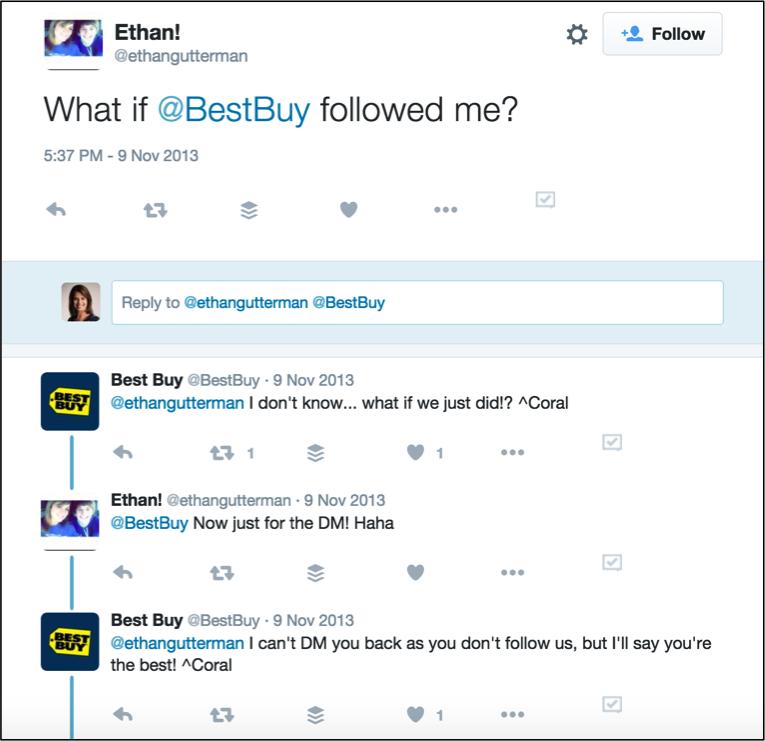
On the other hand, while Old Spice usually does a really great job of listening on social, see what it did on Nov. 13, 2015:
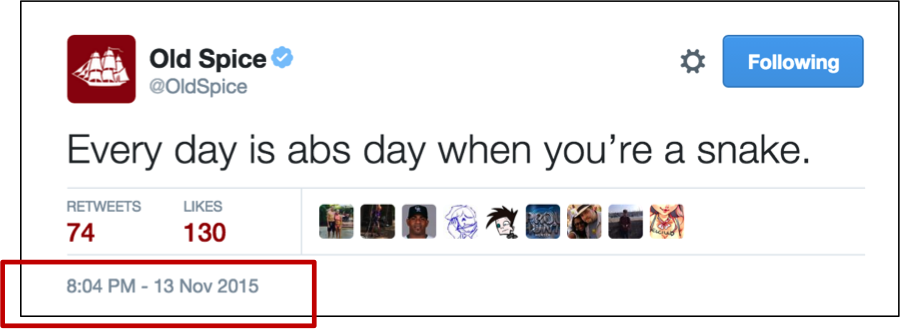
Which was when the 2015 Paris attacks took place.
And people were not happy.
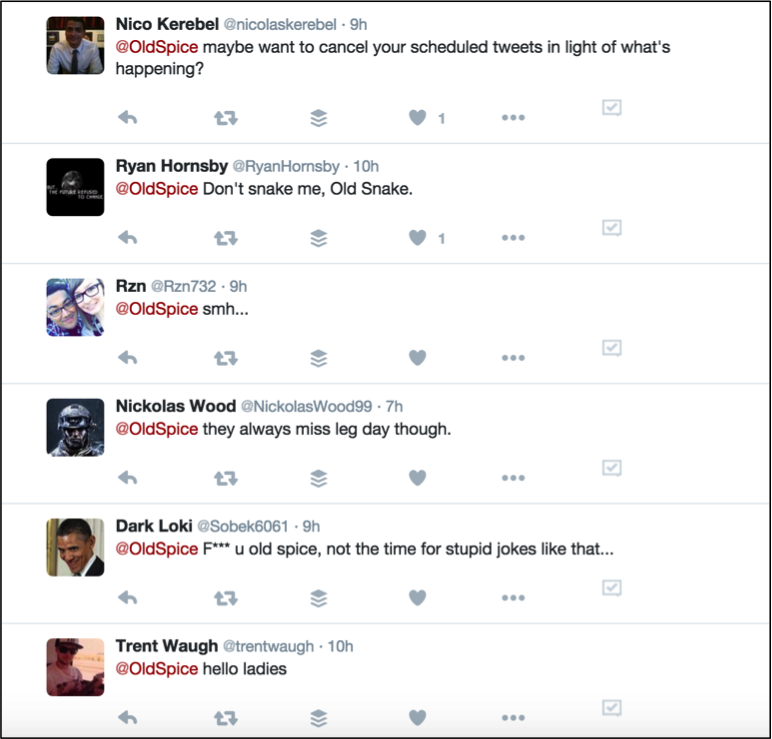
It’s not that people don’t understand that social media posts might be scheduled, or automated.
It’s that they expect brands to be paying attention to what’s going on, and react accordingly.
All said and done, there wasn’t a lot of blow-back on Old Spice. But not listening has really backfired on brands in the past (it took Komen for the Cure a couple of years to start recovering from its 2012 setback).
And, as the saying goes, “Those who cannot remember the past are condemned to repeat it.”
So how do you incorporate meaningful conversation, the fourth C, into your Social PR strategy?
- Listen. This means setting up a listening program for the conversations most relevant to your space. It can be as simple as a series of Google or Talkwalker Alerts, or as sophisticated as a Traackr dashboard (disclosure: client).
- Then engage in those conversations, making sure you’re providing value. That’s one of the primary reasons my #measurePR Twitter chat has lasted so long. I try really hard to listen to what people are asking for, and then create a platform for experts to answer their questions.
- Be human. This sounds really silly and/or simple, but you’d be amazed at how hard it can be for brands.
- Use technology well. By now, no one expects you to be on social media 24/7 unless it’s a crisis situation. If you automate some of your conversational elements – such as when you’re disseminating short- or long-form content – no one will (should) mind as long as there’s also a real-time element to it.
- Stay on top of your systems. Just because we have automation tools at our disposal (e.g. I love Buffer and PostPlanner) doesn’t mean we turn them on and tune out. We need to stay on top of our tools, otherwise the tools will soon top – and maybe topple – us.
Element #5: Community
This is one of my all-time favorite elements and parts of Social PR; in fact, it’s what has most informed my practices of PR and how I came to develop the 7C Social PR Framework™.
When you think about it, social technologies have really transformed our world, and our work.
Back in the day, as I said earlier, PR pros had primarily one channel via which to inform their audiences of their clients’ (or organizations’) work: the news media.
Now, thanks to social technologies, we can connect with people in the blink of an eye, and with the click of a mouse.
It’s magical!
But while it is exhilarating to talk to pretty much anyone you want to, whenever you want to, it is even more exhilarating to know that, as a Social PR pro, you need no longer depend solely on the media to communicate your story for you.
No more ball and chain!
OK… there’s still a bit of a ball and chain, especially if your work focuses on media relations.
You still have to engage in smart media relations; in fact, you have to engage in even better media relations today, I think, precisely because technology has made it possible for any Tom, Dick and Harry to blast out “news” via an email marketing program.
But – and this is particularly empowering if your story isn’t exactly front-page material – you don’t have to rely only on the media to help you get the word out.
Since you can communicate your message directly to your audience, if you are smart about listening to and engaging in conversation (C alert!) with them, you can start to build communities around your content (C alert!) and subject matter.
And if you build those communities well, you will get to a point where you have educated and cultivated them enough to be motivated to tell your story for you.
Community: Example
This is what we did during the Blue Key campaign, which will remain one of my all-time favorite projects.
On basically no budget, we built and managed such a stellar community of Blue Key Champions, that they really adopted the cause as their own.
Let me say this bit again: “no budget.”
But because we really focused on:
- building a community of Champions
- respecting them, and
- empowering them to tell the organization’s story as they saw fit,
we were able to spread the word far and wide in an extremely impactful way.
The funny thing is: even though “media” per se was not part of our charge, we ended up getting some pretty heavy hitting media coverage (Mashable, anyone?) because of the innovative Social PR approach (C alert: creativity!).
And because we let the Champions take the campaign and run with it, we saw some incredible initiatives – many of which we embarked on for the first time – unfold.
Initiatives such as:
- #bluekey tweetathons
- offline #bluekey meetups led by the Champions
- corporate sponsors, attracted by the influencers participating as Champions
- cause partnerships such as with TweetDrive
… and so much more.
Here’s what you must keep in mind when bringing your community initiatives up to speed as part of your Social PR strategy:
- You have to engage and empower your community
- You have to be of service – no ifs, ands, or buts
- You must listen (there’s that word again) and respond
- You have to respect your community.
Element #6: Collaboration
We’re so used to having our gadgets at our fingertips, it’s almost hard to imagine a time we couldn’t connect with each other at the press of a button.
Forget buttons… by pressing a dot on a screen!
And just as we can build communities thanks to social technologies, we can also collaborate with each other in a way we’ve never been able to before… without even being in the same location.
This is really remarkable.
Today, virtual collaboration is so easy, we take it for granted. Just for our work alone (SBC and/or client work), we use:
- Asana or Basecamp for project management
- Slack for collaboration (including with clients)
- myriad G-Suite products for collaborating on projects (Drive, Docs, Sheets…)
- Dropbox as a virtual server
… there’s no way I can list them all; those are just a few.
And just as collaboration makes for efficiency both internally and externally, it also encourages the growth of social, empowered, and active communities, that can really elevate your thought leadership.
Collaboration: Example
Take the UK Marketing Network group on LinkedIn, for example, which I learned about through the Link Humans blog.
It’s massive – more than 50,000 members.
It hasn’t grown to this size overnight, as you’ll read in the case study.
But one of the primary factors in its success – and it is really successful, a thriving, active community – is that the moderators collaborate really well with each other.
They make the rules of engagement very clear, and they stick to them.
And because it would be impossible for one person to actively moderate and manage a group, the group admins all support each other without being overbearing.
Collaboration is key in a Social PR world, because it’s what allows us to grow and thrive.
Element #7: Calibration
I wish I could say I’ve saved the best for last, but that wouldn’t be fair to the previous six Cs. :)
But I will say this, with apologies to George Harrison: if we don’t know where we’re going, any road will take us anywhere but there.
And that is why calibration – the 7th C – is so important.
Merriam-Webster defines calibration as “to measure (something) in an exact and precise way.”
There’s a reason that Corollary (C #1) and Calibration (C #7) are the bookends of the 7C Social PR Framework™.
Because you cannot be strategic if you don’t know how you’ll measure your progress.
Everything else – all the cool stuff you come up with for your campaign – falls in between.
Smart metrics must be built into a campaign or initiative from the get-go in order for it to be strategic, efficient, and effective.
Now, there are more than enough measurement platforms and tools out there, with new ones springing up by the hour, it seems, to wipe the smile off the Cheshire Cat’s face.
And what we do far too often is get caught up in trying to measure the tools at our disposal, as opposed to measuring the progress of our work (and using those tools accordingly).
To put a smart Social PR strategy in place, here is the most important question to be able to answer from the outset:
How will our work support and/or impact our organization’s business objectives?
All organizations – including nonprofits – have specific business objectives to help them grow their revenue, market share, and so on.
They have specific indicators they’ve identified – key performance indicators – to track their progress.
And as Social PR pros, it’s our job to show how we’re helping move the needle.
Calibration: Example
Another of my favorite projects was when we worked with Oxfam America back in 2012, on its 2012 International Women’s Day initiative.
While we were engaged basically for blogger outreach (i.e. the 21st century version of media relations), I really wanted to see if/how our work supported the organization’s business objectives.
I wrote up this case study shortly after the project finished, and still refer to it.
Because it shows how something that has traditionally been extremely suspect on the measurement front – media relations – can bring real value to the organization.
Our charge was simple: to garner (that’s a lovely PR-type word, isn’t it?) visibility around the eCards the organization had created for IWD 2012.
But the point of it all was to get people to their site to send these eCards in celebration of IWD.
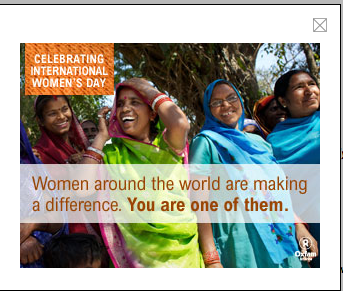
So we did.
Yes, we measured “hits” and impressions. Just the slide on coverage itself was extremely impressive, as you saw in the case study.
But more importantly, through creative (there’s one of those Cs again), focused, and consistent outreach, we helped the organization get an almost 300% jump in the number of new constituents it secured for its advocacy initiatives… which was the business objective of the campaign.
In Oxfam America’s case, more constituents means a larger community. A larger community meant more reach and, ultimately, more conversions to donors.
Business results, baby.
This is The 7C Social PR Framework™ Blueprint for Success
I know this was a lot – a LOT! – of information. And if you’ve hung in there with me till now, I’m really, really impressed!
Now that you’ve come this far, here’s what I think you should do next:
Join the Social PR Posse community on Facebook, and ask me all you want on Social PR.
That way, you’ll be around other smart pros also looking to learn more about Social PR, understand exactly why it is the wave of the future, and be able to share ideas with each other.
Besides, it’s free. So it’s kind of a no-brainer.
Now, if you already get why this approach is so successful, you’re more than welcome to check out the Master Course right away.
It’s where we go deep into the hows of getting a really solid Social PR program in place. Tons of examples, swipe files, cheat sheets, exclusive group coaching calls … all sorts of great stuff.
Because while knowing what to do is important, knowing how to do it well is even more important.
That’s what we’re here for, right?
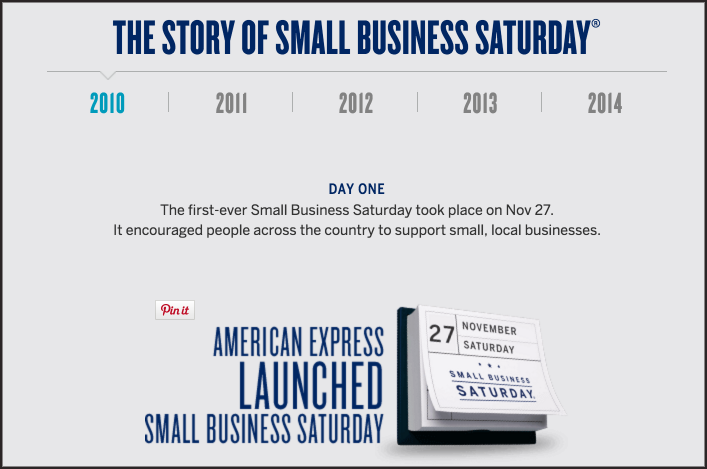
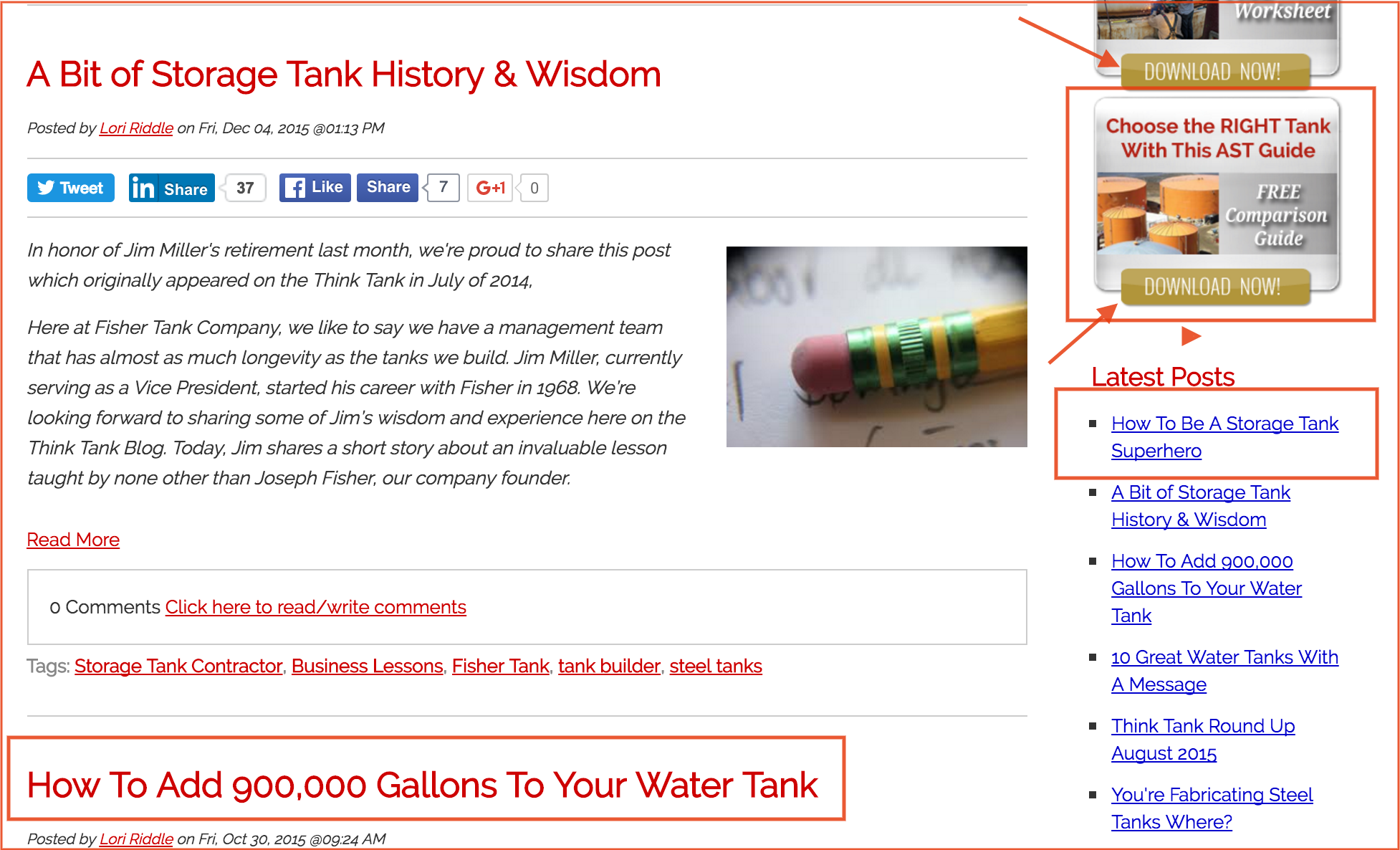
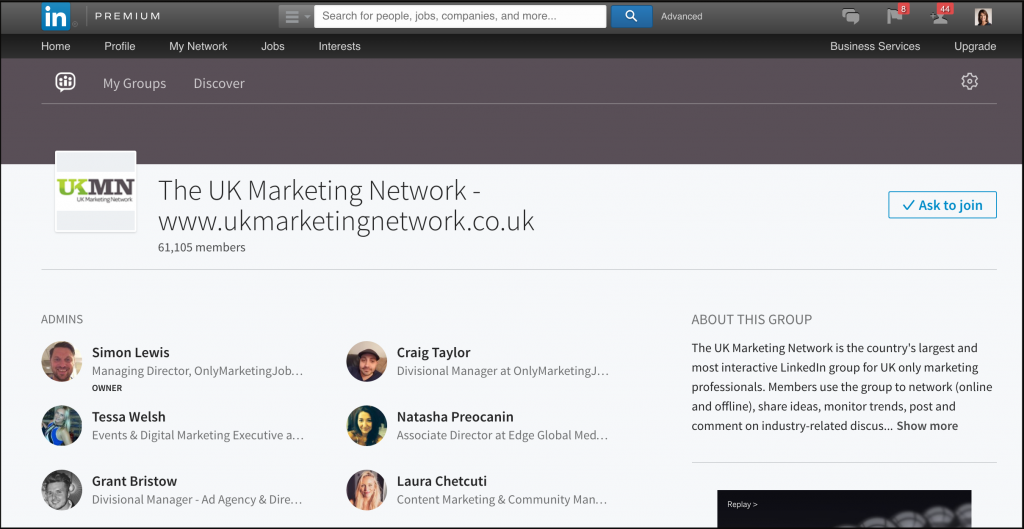


![[EVENT]: PR Hacks for Small Biz (online)](https://shonaliburke.com/wp-content/uploads/2021/06/FB-Ad-1200x800-01-01-01-Copy-500x383.jpeg)
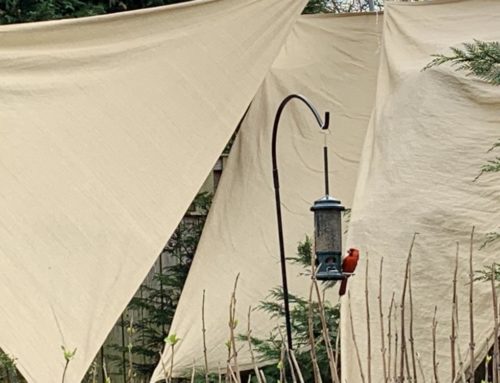
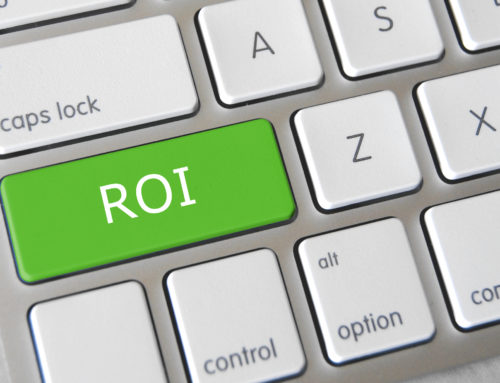


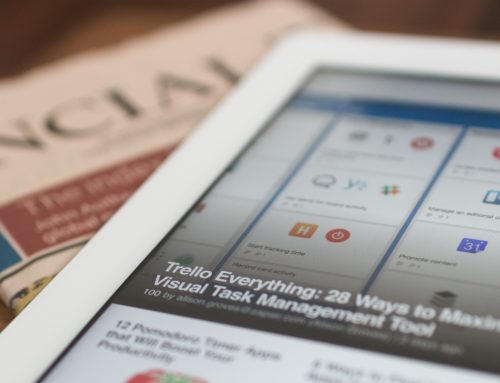
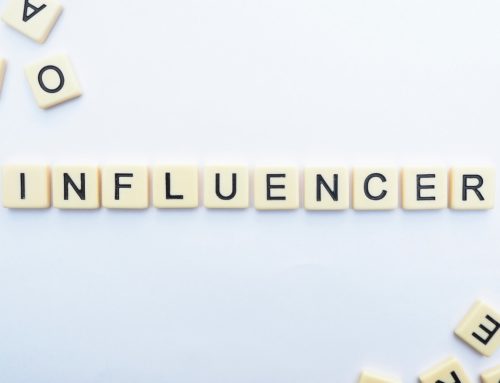
[…] that includes putting together really great content such as this monster post on the ultimate guide to Social PR strategy and the related 7C Social PR Framework™ Blueprint for Success (even though it nearly killed […]
[…] blog posts, you could use GIFs to lighten up dense topics (like Shonali did here). GIF resources like GIPHY have them stored in emotion and action based categories like happy, […]
[…] with people as human beings, not numbers on a spreadsheet, listening to them and engaging in meaningful conversations makes all the difference in the world. That’s what Social PR is all […]
[…] that consistently come into play for smart Social PR. So I recently codified them in what I call my 7C Social PR Framework. You’ll see that content is itself one of them, but you should test a variety of content, and get […]
[…] wrote this up in a humungous blog post based on a free training I did in November 2015, where I introduced my 7C Social PR Framework(TM). […]
[…] I did write a monster post back in April where I gave you an in-depth analysis of the framework with examples. Today, I’m giving you […]
[…] 5. The Ultimate Guide to Social PR Strategy: A Blueprint for Success […]
[…] truly believe that a Social PR approach is the most effective and rewarding way to practice PR […]
You are THE BEST!
Oh, you’re so kind Elise. I can’t wait to hear what you think!